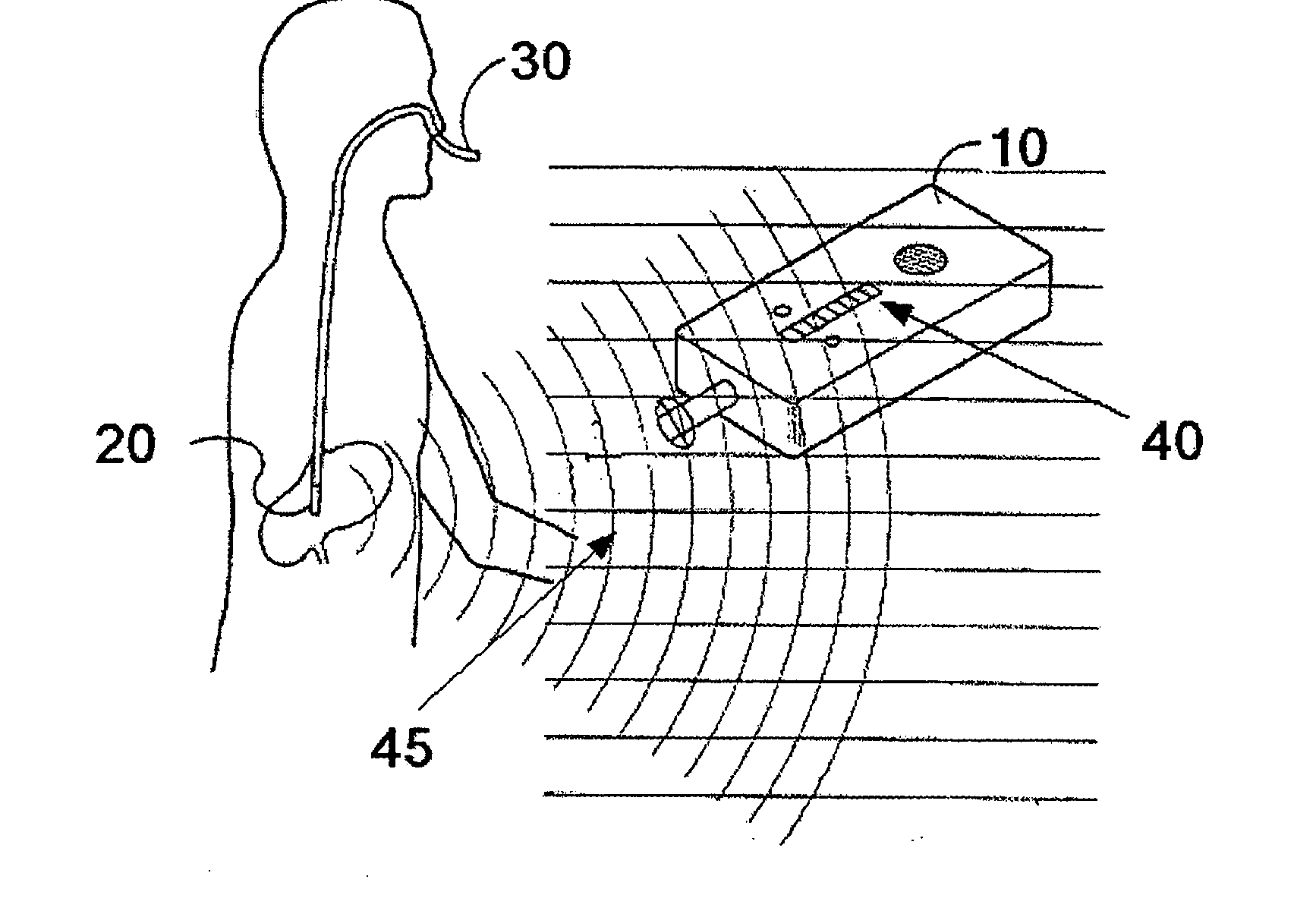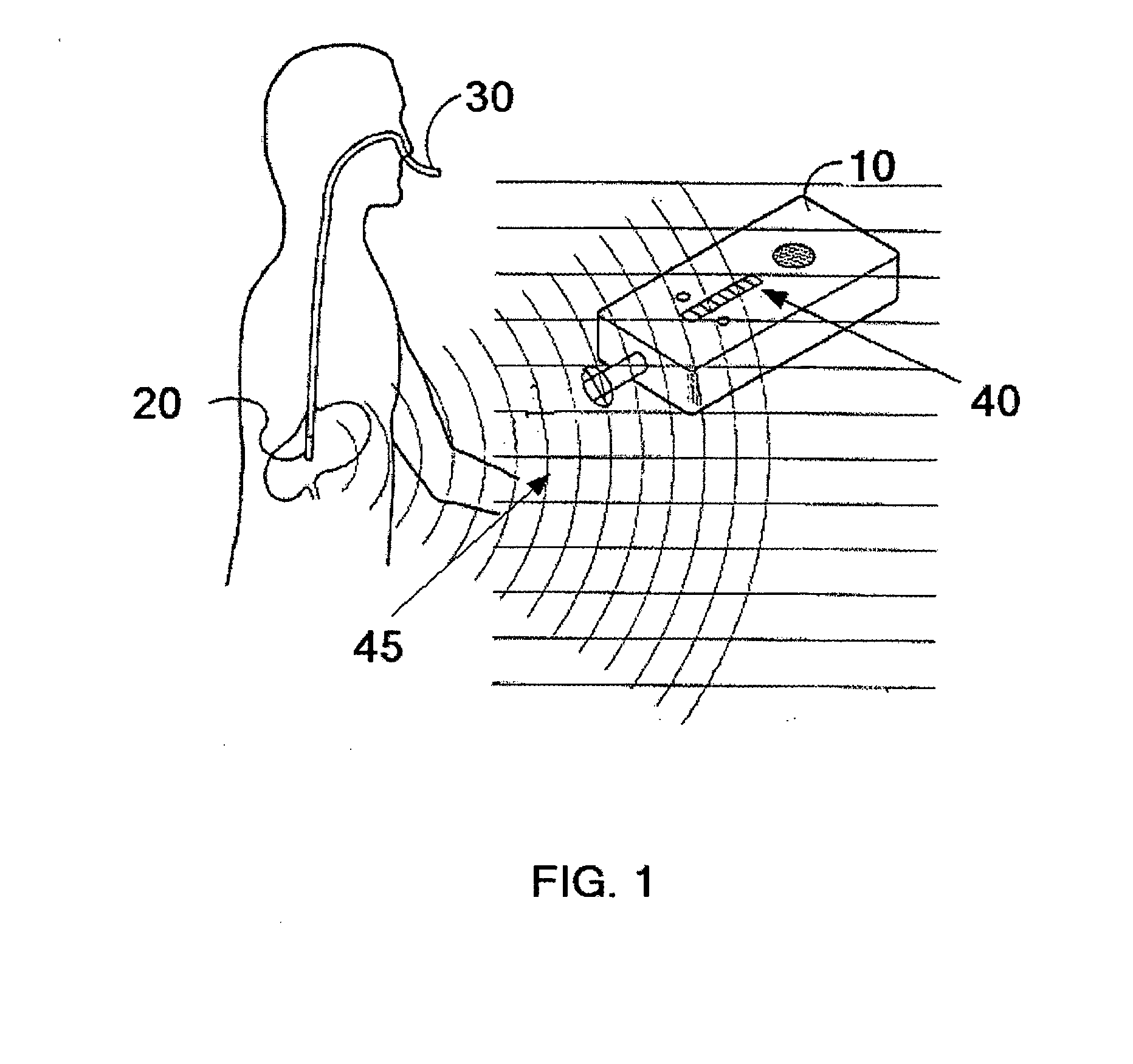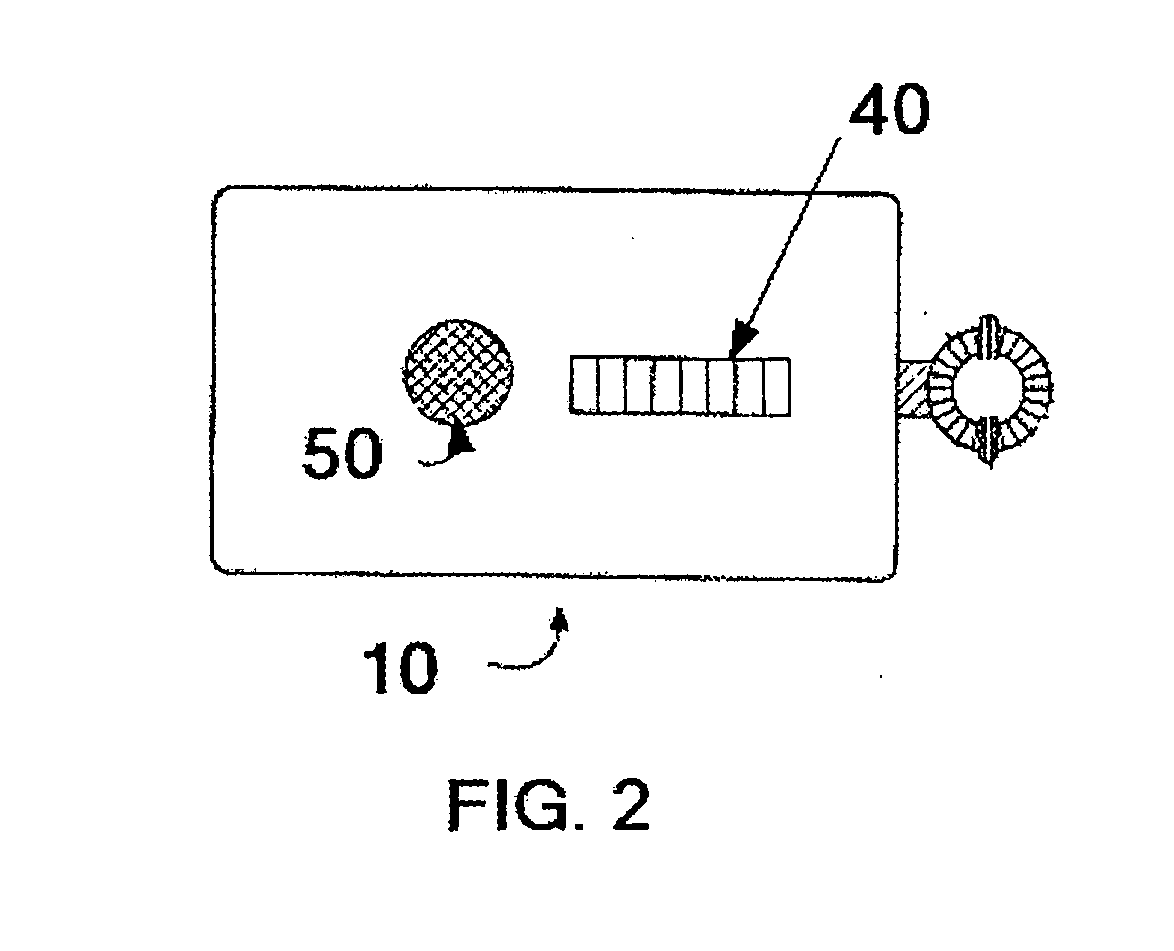Medical tube and system for locating the same in a body using passive integrated transponders
- Summary
- Abstract
- Description
- Claims
- Application Information
AI Technical Summary
Benefits of technology
Problems solved by technology
Method used
Image
Examples
example 1
Detection of a Feeding Tube
[0039]The feeding tube 30 shown in FIG. 1 is inserted into a patient's nose, down the esophagus and into the stomach. The detection apparatus (10) is employed to sense the passive integrated transponder's field strength. As the detection apparatus 10 is scanned about the patient's body, greater and lesser electromagnetic field gradients 45 are indicated. The closer to the PIT tag is to the grid dip oscillator detection device the greater is the reader signal. The feeding tube 30 is located by moving the detection apparatus until the greatest magnitude is indicated by the detection apparatus visual display and / or speaker sound volume or pitch.
example 2
Detection of an Endotracheal Tube with Multiple PIT Tags
[0040]The endotrachael tube 80 shown in FIG. 4 is inserted into the patient's mouth and into the airway to the lungs. The multiple PIT tags (90) are used in order to allow a range of detection sites so as to bracket the precise location in the patient. This method allows more precise detection of the tube in the event the electromagnetic field of any one tag is disrupted or undetectable.
PUM
 Login to View More
Login to View More Abstract
Description
Claims
Application Information
 Login to View More
Login to View More - R&D
- Intellectual Property
- Life Sciences
- Materials
- Tech Scout
- Unparalleled Data Quality
- Higher Quality Content
- 60% Fewer Hallucinations
Browse by: Latest US Patents, China's latest patents, Technical Efficacy Thesaurus, Application Domain, Technology Topic, Popular Technical Reports.
© 2025 PatSnap. All rights reserved.Legal|Privacy policy|Modern Slavery Act Transparency Statement|Sitemap|About US| Contact US: help@patsnap.com



